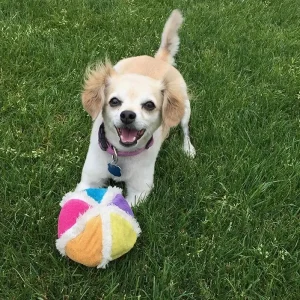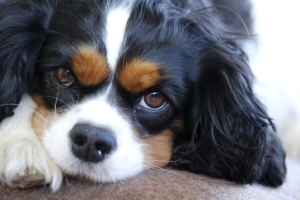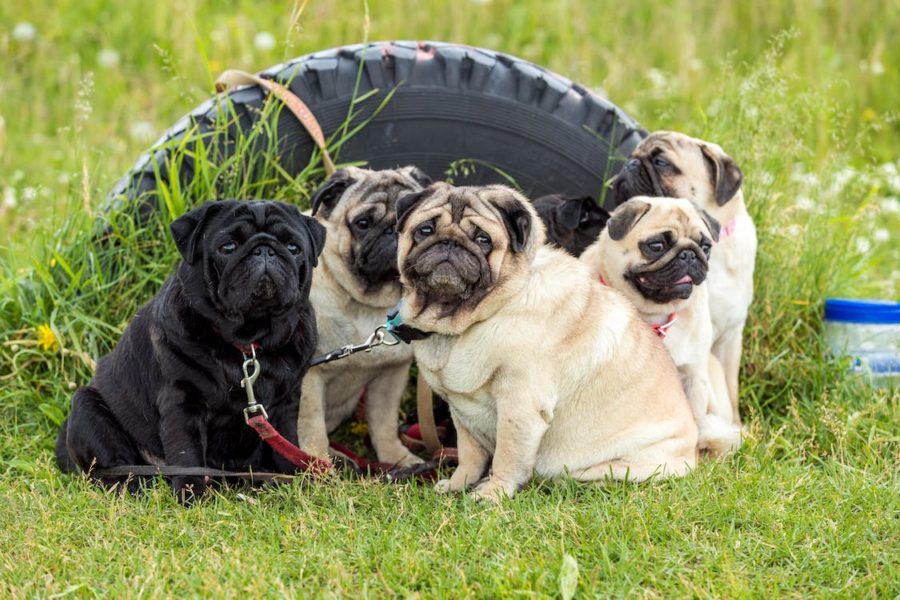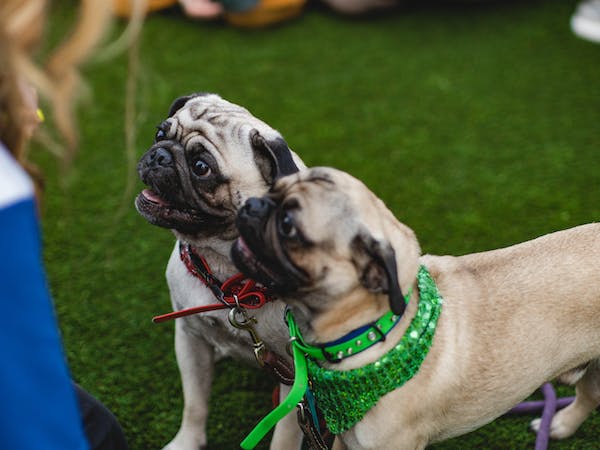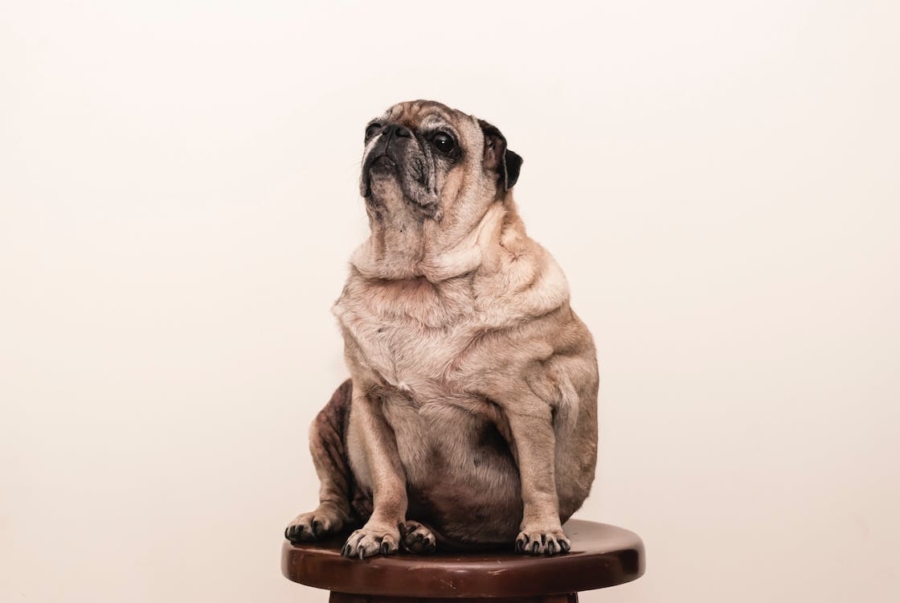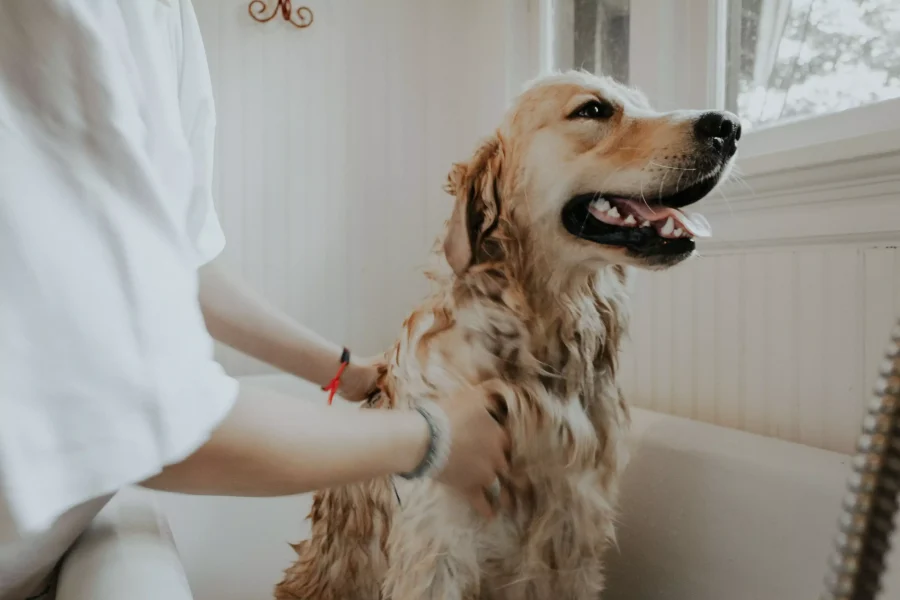Pugs are known for being some of the most delightful and affectionate breeds of dogs. However, due to their flat faces and big eyes, pugs can be prone to certain health issues. In this blog post, we’ll discuss ten common pug health problems and how to fix them. Whether you already own a pug or you’re thinking of getting one, it’s important to be aware of these pug health issues so that you can spot the signs early and take the necessary steps to ensure your pup stays healthy and happy.
Problem # 1: Allergies
Allergies are one of the most common health problems in pugs. These dogs can be especially prone to seasonal allergies, skin allergies, and food allergies.
Signs:
Allergies can cause a range of uncomfortable symptoms, such as sneezing, coughing, and itchy skin. If your pug is experiencing any of these symptoms, it is important to visit a vet to get an accurate diagnosis. Your vet can also help you determine which allergen is causing the reaction and provide treatments or advice on managing the condition.
Treatments:
Fortunately, most allergies can be managed with simple lifestyle changes. Often, the shampoo used on pugs is the underlying cause of allergies. pugs prefer nourishing gentle natural shampoos that are void of chemicals, sulfates, parabens, artificial fragrances, and manufactured preservatives. Keeping your pug’s skin healthy helps to better its immune system.
Problem # 2: Brachycephalic Airway Obstruction Syndrome (BAOS) | Respiratory Problem
Pug dogs are one of the most beloved breeds of dogs, and with their funny faces and personalities, it’s no surprise that they’re popular. However, their flat-faced features can lead to common health problems such as Brachycephalic Airway Obstruction Syndrome (BAOS).
Causes & Symptoms:
BAOS is a collection of upper airway problems that pugs are predisposed to due to their shortened muzzle and small nostrils. This can include snoring, noisy breathing, and difficulty exercising. If your pug has any of these symptoms, it’s important to take them to the vet immediately.
Treatment:
Fortunately, BAOS can be managed with medication and, in some cases, surgery. So, with proper care, your pug can still live a long and happy life.
Problem # 3: Progressive Retinal Atrophy (PRA) | Eye Problem
Progressive Retinal Atrophy (PRA) is one of the most common health problems for pugs. It is a degenerative eye disease that causes vision loss.
Cause:
PRA is caused by a genetic mutation and is inherited from both parents. Unfortunately, there is no cure for this condition, and treatment options are limited. However, early diagnosis is key to managing the symptoms and can help prolong your pug’s vision and improve quality of life.
Signs:
Symptoms of PRA include night blindness, difficulty adjusting to bright light, and increased sensitivity to sunlight. If your pug is displaying any of these signs, it’s important to get them checked out by a veterinarian right away.
Treatments:
Treatment options for this pug health issue can include dietary changes, special medications, and supplements to slow the progression of the disease. It’s important to be aware of the risks of PRA to keep your pug healthy.
Problem # 4: Elbow Dysplasia | Joint Problem
Elbow dysplasia is a common health concern among pugs and can lead to significant pain and lameness.
Causes:
This problem occurs when the cartilage cushions the elbow joint and becomes damaged, and bone fragments form within the joint, causing arthritis and pain. In severe cases, the dog may need surgery to remove the fragments. Therefore, it’s important to keep your pug healthy, as elbow dysplasia can significantly reduce its lifespan.
Signs:
Signs of this condition include;
- reduced activity
- difficulty standing or walking
- reluctance to move
- limping
Treatments:
If you suspect your pup is suffering from elbow dysplasia, it’s important to take them to the vet for an exam and X-rays to determine the best course of treatment. In some cases, this may involve medications, exercise, and weight management.
Problem # 5: Patellar Luxation | Joint Problem
Patellar luxation is a common health problem in pugs, affecting the knee joint. In addition, the kneecap, or patella, can become dislocated due to weak ligaments that attach to the thigh bone.
Signs:
Symptoms of patellar luxation include limping and pain in the knee area. To help prevent this condition, it is important to keep your pug healthy and fit, as excess weight puts extra strain on the ligaments.
Treatment:
If your dog is diagnosed with patellar luxation, treatment usually involves surgery. Fortunately, many dogs that undergo surgery fully recover and lead a normal, active life. Taking preventive measures like proper diet and exercise will help keep your pug healthy and also help extend its lifespan.
Problem # 6: Legg-Calve-Perthes Disease | Joint Problem
Legg-Calve-Perthes Disease (LCPD) is a common pug health issue caused by the degeneration of the hip joint. This disease can cause significant pain and lameness in dogs, which affects the pug’s quality of life and mobility.
Cause:
The disease occurs when the blood supply to the head of the femur bone becomes restricted, causing the bone to soften and die. As the bone deteriorates, it can become distorted and cause discomfort when moving or using the leg. Although there is no single cause for LCPD, genetics may be a factor, as well as poor nutrition or excessive exercise during growth periods.
Signs:
Dogs with LCPD often show signs of pain, such as limping, favoring one side of the body, reluctance to move or climb stairs, or an unwillingness to bear weight on the affected leg.
LCPD is most commonly seen in young dogs under two years old, and pugs are particularly prone to developing this condition.
Treatment:
Treatment involves surgery to remove the damaged bone and insert a prosthetic joint. With proper care and treatment, dogs can recover from LCPD and live a long and healthy life.
Problem # 7: Hip Dysplasia | Joint Problem
Hip dysplasia is a common health problem for pugs and other breeds of dogs. It is a disorder that causes the hip joint to become weak and unstable, leading to pain and lameness. Hip dysplasia is a genetically inherited condition that affects how the femur fits into the hip socket.
Signs:
Symptoms of hip dysplasia may include decreased activity level, difficulty getting up or climbing stairs, hind limb lameness, and reluctance to move. In order to keep your pug healthy and prevent or slow down the onset of hip dysplasia, it is important to provide proper nutrition, regular exercise, and an appropriate amount of weight.
Treatments:
Several treatments are available for hip dysplasia, depending on the severity of the condition. Some of these treatments include anti-inflammatory medications, physical therapy, orthopedic surgery, and weight control. However, surgery is usually only considered when other treatments have failed to improve the dog’s condition.
Problem # 8: Phosphorus Deficiency | Metabolic Problem
Pug dogs are prone to various common health problems, ranging from mild to serious. One of the most serious is phosphorus deficiency, also known as hypophosphatemia. This condition can be life-threatening and requires immediate medical attention.
Signs:
Pugs with phosphorus deficiency may have several symptoms, including vomiting, diarrhea, muscle weakness, seizures, lethargy, and anorexia. They may also exhibit signs of dehydration and depression. To diagnose phosphorus deficiency, your vet will complete a blood workup to measure your pug’s phosphorus levels.
Treatments:
Fortunately, phosphorus deficiency can be managed and treated with dietary changes and supplements. Your vet can recommend a balanced diet for your pug that includes higher levels of phosphorus-rich foods like liver and whole grains. In addition to dietary changes, your vet may also recommend supplements containing phosphorus or Vitamin D3, which can help restore normal levels of phosphorus in the body.
Problem # 9: Gastric Dilatation-Volvulus | Bloating | Stomach Problem
Gastric dilatation-volvulus commonly referred to as bloat, is a common and potentially life-threatening health issue among pugs.
Cause:
It occurs when the stomach twists or fills with gas or fluid, blocking blood flow to other vital organs and causing the abdomen to become distended.
Signs:
Symptoms of bloat can include retching and unsuccessful attempts at vomiting, restlessness, abdominal pain, and excessive salivation. Pug owners should be aware of the signs of bloat, and it’s important to take your precious pugbaby to the veterinarian if you think he is suffering from this condition.
Treatments:
Treatment typically includes stabilizing the dog, surgery to untwist the stomach and possibly other treatments to reduce the risk of recurrence. To help prevent bloat, it’s recommended to keep your pug healthy by giving him regular exercise, using grooming products that nourish rather than just clean the skin, maintaining a balanced diet, and avoiding large meals right before or after exercise. In addition, pugs should not be overfed, as this can increase their risk of developing bloat. With proper care and prevention, pugs can live a long and healthy life with minimal health concerns.
Problem # 10: Obesity | Metabolic Problem
Obesity is a common health problem for pugs and one of the most serious pug health concerns. Obesity can lead to many other health issues and dramatically reduce a pug’s lifespan if left unchecked. In order to keep your pug healthy, it is important to ensure they are not overfed and getting enough exercise.
Treatments:
Pugs, like all dogs, need a balanced diet that consists of quality protein, fat, carbohydrates, vitamins, and minerals. Therefore, it is important to ensure that your pug receives adequate nutrients to prevent obesity. You should also monitor your pug’s weight regularly and adjust its diet accordingly.
In addition to a healthy diet, pugs need regular exercise to maintain weight. So ensure you provide your pug with plenty of playtimes and walks to keep them active. . This will help your pug stay fit and healthy and reduce their chances of developing obesity-related illnesses.
#Pugs #PugDogs #PugHealth #PugProblems #PugIssues

